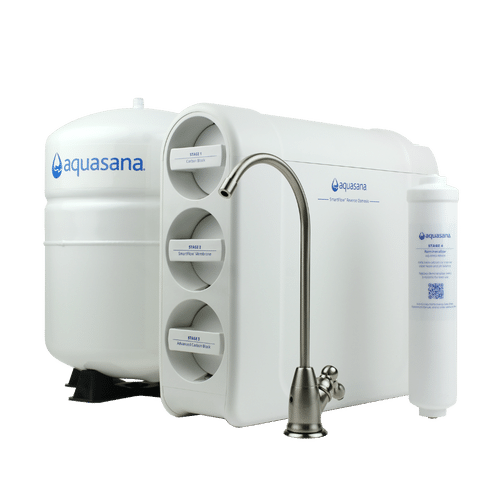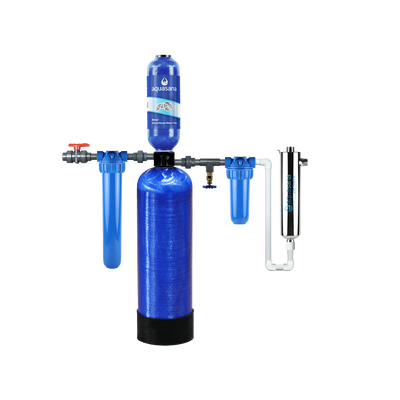UNDER SINK WATER FILTER
SmartFlow® Reverse Osmosis
High-efficiency reverse osmosis system removes up to 99.99% of 90 contaminants, including fluoride, arsenic, chlorine, and lead.

Distillation
Distillation is a type of water purification that separates contaminants from the water through boiling. When water is boiled, clean water evaporates into steam while the contaminant particles are left behind. Water purifiers that use distillation collect the clean steam, which is later condensed back into liquid water for drinking and other purposes. While distillation removes minerals, microorganisms, and chemicals with a high boiling point, they do not remove volatile organic compounds. As such, distillation systems may require additional filtration before use.
Ultraviolet (UV)
Ultraviolet water purifiers use UV light to kill microorganisms in water including bacteria, viruses, parasites, and cysts. UV light pierces the cell walls of microorganisms, either killing them or damaging their DNA so they can’t reproduce (known as inactivation). The dead microorganisms remain in the water, but are rendered completely harmless. However, much like distillation doesn’t remove VOCs, ultraviolet water purifiers are limited as well. Ultraviolet purifiers can only kill microorganisms, they won’t help with other contaminants such as chlorine, fluoride, or inorganic materials like metals including lead. To remove those contaminants, you’d need to pair a UV water purifier with another system.
Which type of water purifier should you choose?
Each different type of water purifier has their own pros and cons. Overall, reverse osmosis is your best choice for maximum contaminant removal, just make sure to get a system with remineralization technology. If you opt for a water purifier that relies on distillation or ultraviolet light treatment, make sure to supplement it with another system to address the gaps in contaminant removal associated with each of these purification methods.
Choosing the right system to remove contaminants is an important decision, so beyond water purifiers, we’d also recommend examining water filters. You’ll likely find that water filters are more than capable of removing the contaminants you’re concerned about, and you have more options to choose from. To learn more about water filters, check out our guide “How To Choose A Water Filter.”


